PC
T&P
| |
PERSONAL CONSTRUCT
THEORY & PRACTICE
|
Vol.6 2009 |
| PDF version |
| Author |
| Reference |
| Journal Main |
| Contents Vol 6 |
| Impressum |
| |
|||||||||||||||||||||||||||||||||||||||||||||||||||||||||||||||||||||||||||||||||||||||||||||||
| |
|||||||||||||||||||||||||||||||||||||||||||||||||||||||||||||||||||||||||||||||||||||||||||||||
| TAKING PICTURES VS. MAKING ART: A PERSONAL CONSTRUAL OF CREATIVE PHOTOGRAPHY |
|||||||||||||||||||||||||||||||||||||||||||||||||||||||||||||||||||||||||||||||||||||||||||||||
| Spencer A. McWilliams | |||||||||||||||||||||||||||||||||||||||||||||||||||||||||||||||||||||||||||||||||||||||||||||||
| California State University San Marcos, USA |
|||||||||||||||||||||||||||||||||||||||||||||||||||||||||||||||||||||||||||||||||||||||||||||||
|
|||||||||||||||||||||||||||||||||||||||||||||||||||||||||||||||||||||||||||||||||||||||||||||||
| |
|||||||||||||||||||||||||||||||||||||||||||||||||||||||||||||||||||||||||||||||||||||||||||||||
 Figure 1: Victoria Dock I photograph a variety of subjects, including scenic pictures of places visited, people, buildings, sunsets, cars, and motorcycles. While taking ‘pictures of things’ I try to make the best possible images that I can, maximizing effective lighting and composition. At Yosemite National Park the week prior to the event described above, I ‘took pictures of’ a variety of scenes of waterfalls, mountains, rivers, and major landmarks, including Half Dome and El Capitan, made famous by Ansel Adams in his pioneering photography (Figure 2). Many other people occupied these prime viewing locations, including serious photographers with large format view cameras and tripods, but never while photographing in this setting did anyone ask “What are you taking pictures of?” 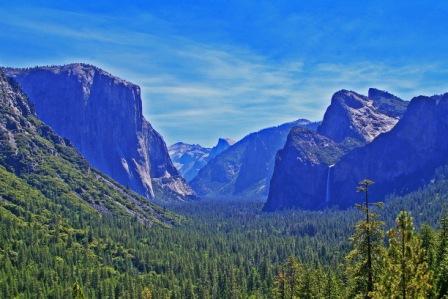 Figure 2: After Adams The distinction between these two kinds of activities recurs in my photography: ‘taking pictures of things’ and what I refer to as ‘making art’ (and what Ansel Adams [1959/1979], who, disliking ‘creative’ and ‘artistic,’ defined as “photopoetry”). When I use photography to make art I seek to create a visual composition as the dominant viewing experience, often an abstraction rather than a representation of a recognizable object. A viewer may not always identify the subject of the photo. My approach to creative photography emphasizes shapes, colors, textures, pattern, light, line, and composition, to create an image that I find aesthetically appealing and intriguing, even with subjects that we might not normally identify as beautiful or artistic. I see these photographs as images that stand on their own as works of art that I hope also intrigue a viewer aesthetically, rather than a picture or re-presentation ‘of’ something. I do not view ‘making art’ as superior to ‘taking pictures,’ but I approach the two activities differently. The final section of his article will describe some of the construct dimensions subordinate to the making art activities and their relation to Kelly’s Creativity Cycle and other Kellian constructs. CONSTRUCT DIMENSIONS: TAKING PICTURES VS. MAKING ART & FOUNDATIONALIST VS. CONSTRUCTIVIST The question posed by the passerby helped me to articulate my thinking about my approach to photography, and led me to identify the dimension of ‘taking pictures vs. making art’ as one of several recurrent themes in the photographic process and the elements that attract me. From a Personal Construct Psychology view, construing recurrent themes involves both comparison and contrast, noting ways in which some events compare similarly to others and ways other events differ from them. This process provides a basis for articulating bi-polar construct dimensions. The following discussion explores my elucidation of creative photography from a PCP perspective, elaborating on some of the dimensions that I find useful in construing photography as an art form, and includes both personal reflection on my experience and a range of relevant literature. I will begin with an exploration of some of the superordinate implications of my prime photographic construct dimension ‘taking pictures vs. making art,’ including how this dimension relates to constructivism in general and a constructivist or postmodernist perspective on art and photography. Table 1: Superordinate construct dimensions
I locate the ‘taking a picture vs. making art’ dimension as directly subsumed within the superordinate dimension of foundationalism vs. constructivism. Table 1 presents construct dimensions that I will discuss, with foundationalism vs. constructivism as the most superordinate, and how that dimension subsumes views of ontology or ‘reality,’ epistemology or knowledge and truth, and art, particularly modern vs. postmodern art. Although we will see paradox and ambiguity with respect to photography and will occasionally ‘slot-rattle,’ I propose aligning the ‘taking a picture’ pole of the dimension under the foundationalist pole, along with a modernist view that sees works of art as representations that stand for something external and possess an inherent identity and meaning, and align the ‘making art’ pole with the constructivist, postmodernist perspective that regards the work of art as standing on its own, without inherent meaning, and with meaning located in the experience of the observer. Let me elaborate further on this proposition. Although different languages may use different terms to describe the photographic process, perhaps yielding different connotations, American English speakers, including professional artistic photographers (see below), typically describe it as ‘taking pictures.’ To ‘take a picture of something’ assumes that the something already existed prior to the photographer’s involvement. It carries connotations similar to the use of the term ‘discover’ in reference to the idea that a scientific finding represents a reality that existed independently before the scientist ‘dis-covered’ it. Use of the expression ‘a picture of’ reinforces this notion further by assuming that the picture accurately represents (‘re-presents’) an independently existing thing. These terms reflect a viewpoint that reality exists in a particular form independent of human construal yet potentially available to us, and waiting for us to come along and ‘take’ or ‘dis-cover’ it. A variety of terms can characterize this viewpoint, including modernist, essentialist, realist, foundationalist, or, to use Kelly’s tongue-in-cheek term, accumulative fragmentalist. For the sake of convenience, I will use the term ‘foundationalist’ as the label for this pole of the dimension. The term ‘making art’ assumes that the object of our attention did not exist prior to the human process that led to its creation or construction. Postmodern use of the term ‘art’ does not necessarily require that the piece represents something other than itself. We can view a work of art as something that exists on its own as an object of aesthetic interest. Thus, I see, the ‘making art’ pole of the construct dimension as consistent with the proposition that we cannot identify a preexisting reality existing independent of our human engagement with it. Various terms for this viewpoint include constructivist, postmodernist, antifoundationalist, relativist, social constructionist, pragmatist, or to use Kelly’s terminology, constructive alternativist. Again for convenience sake, I will use the term ‘constructivist’ as the label for this pole, incorporating the common views of these various perspectives. To elaborate briefly on the construct dimensions in Table 1, which should, I hope, feel familiar and comfortable to a constructivist reader, I suggest that a foundationalist view sees ontology or reality as existing independently of human experience, with a pre-existing structure and an inherent meaning. While appearances may change, it assumes permanent essences to objects, things, and concepts. By contrast, a constructivist view suggests that humans construct reality and structure from their experience, create meaning as a human activity, and that we might better view phenomena as interdependent, impermanent, and lacking in a fixed essence. Our understanding of epistemology, what we know and what we mean by terms like ‘true’ and ‘real,’ follows differentially from the two poles of this ontological dimension. From a foundationalist view reality exists in a certain way on its own and must possess only one true, objective description or explanation, discovered by individual geniuses and denoted clearly by its terminology that means what it says it means. Phenomena possess their own clear, inherent meaning, and, once we understand them, fall into inherent categories that exist in nature. From a constructivist perspective, we have no way of knowing reality directly, so we may construct a variety of ways of describing our experience with no objective way of justifying a meaning as the ultimate truth. Ideas, explanations, and beliefs evolve in a social context, the categories we place phenomena in reflect social convention, and descriptions have connotative implications reflecting individual experiences. Rather than a concern with the ‘truth’ of our constructions, we evaluate them in terms of their usefulness in predicting events and their fit with our experience. This explication should, as I hopefully mentioned above, correspond to the commonly held views of most constructively oriented psychologists. CONSTRUCTIVISM, POSTMODERNISM, AND CREATIVE PHOTOGRAPHY I will begin explicating the relevance of ‘foundationalist versus constructivist’ to art and photography with a brief summary of dimensions followed by a more detailed discussion of their implications. I suggest that a foundationalist perspective, consistent with a modernist perspective on art, views art as nouns (objects or events) that express a particular meaning inherent in the artist’s intention. Although the artist may not have conscious awareness of that intention, the work of art represents a latent content that underlies its manifest form, and understanding the work of art requires a probing analysis to uncover the latent, ‘real’ meaning. Thus, the work of art stands as a representative of an underlying actually existing reality, whether in the external world or in the emotions of the artist, and, depending on the effectiveness of our interpretation, confirms our understanding of the world ‘as it exists.’ In contrast, I suggest that a constructivist or postmodern perspective views art as a process (a verb) that requires the active involvement of the spectator’s experience for its meaning. The art may surprise us by not confirming our anticipations and requiring new construal. A work of art may stand on its own rather than representing something else and can even present its own fictional, ‘as if,’ reality. Thus, we may take the manifest material of the work as the thing itself rather than seeing it only as a ‘map’ of an underlying ‘territory.’ The following sections elaborate on these themes by discussing some relevant pragmatic and postmodern writers and pioneering 20th Century photographers. Pragmatism and the experience of art John Dewey, a key figure in American pragmatism, greatly influenced George Kelly’s Psychology of Personal Constructs (Butt, 2005). In Art as Experience, Dewey (1934) regarded artistic creation as a combination of construction and perception resulting from the interaction between the individual and the piece of art. He argued against the modernist view of art as a representation of something already existing, which ignores the contribution of the artist in making something new. For Dewey, a work of art only actually functions when it lives in the experience of someone other than the artist who created it, with each aesthetic experience of a work recreating the art anew. Objects of art communicate to others, whether or not the artist intends the communication, as the consequence of how the work influences the viewer’s experience. It makes no sense, according to Dewey, to ask what the artist ‘really’ means by the work of art, because the artist’s experience differs over time. An articulate artist “would say ‘I meant just that, and that means whatever you or anyone can honestly, that is in virtue of your own vital experience, get out of it’” (p. 109). Photographer Minor White (1957/1980) echoed this view, stating that it made no difference whether a viewer “understood what I was trying to do, because I was not trying to do anything” (p. 309). What it means reflects the context of that person’s experience rather than what it might mean to someone else or at another time. Arguing in favor of ambiguity, Dewey said that an artist’s attempt to communicate a particular message limits the potential experience of the spectator. Dewey suggested that we regard art as a verb rather than a noun, similar to the argument by some Personal Construct Psychologists who suggest that the verb “construing” should replace the noun “construct” in our vocabularies. The art exists in the conduct of the artistic activities, what the artist does and how people perceive it. “The product of art … is not the work of art. The work takes place when a human being cooperates with the product so that the outcome is an experience” (p. 214). Modernism to postmodernism in art and photography Art historian Douglas Crimp (1993) described photography as a “watershed” in art’s transition from modernism to postmodernism, defining postmodernism in art as a reaction against the essentialist idea of a fixed meaning to art. Crimp’s discussion of postmodern photography includes several other concepts similar to those used in social constructionism and constructivism: the lack of individual authorship as artists appropriate others’ methods and images, a plurality of perspectives, and, as described above, the emphasis on the response of the viewer. However, photography’s initial acceptance into the art world began from a modernist perspective. Alfred Stieglitz, famous pioneer of American artistic photography, viewed photography as an art form that represented the emotions of the artist, in Stieglitz’s case focused on mankind’s relation to the industrial world, and that serves to bring the viewer face to face with reality (Eversole, 2005). This perspective placed Stieglitz at the forefront of a modernist view of photography as art, representing the reality of the external world and the artist’s emotions. This issue exemplifies the paradox or ambiguity of photography with respect to the foundationalist vs. constructivist dimension. Relevant to the ‘taking vs. making’ dimension, but in this case collapsing this dimension and subsuming it under the modernist pole, the artist can take from what exists in reality when making art. In the history of photography’s acceptance as art, Crimp states, “It is precisely on this distinction—the distinction between making and taking—that the ontological difference between painting and photography is said to rest” (Crimp, 1993, p. 71). John Szarkoswki (1966/1979), The New York Museum of Modern Art’s photography department director, in establishing criteria for photography as a fine art, described paintings as something made but photographs as something taken. He sees the artist as seeking structure, order, and simplicity, distinguishing between the start of a picture in ‘reality’ and the craft and structure that completes a picture. Ansel Adams (1943/1980), however, rejected the view of photography as something taken. “The common term ‘taking a picture’ is more than just an idiom; it is a symbol of exploitation. ‘Making a picture’ implies a creative resonance which is essential to profound expression” (p. 261). Adams described his beliefs about nature’s vigor, grandeur, growing things, the relation of humans to nature, and how photography expressed his vision. He saw his photography as a means through which he could express this affirmation. Although Adams and Szarkowski might have disagreed regarding the meaning of ‘taking vs. making,’ they, along with Stieglitz, assume a modernist stance that regards photography as a distinct medium that represents reality through the subjective expression of the individual artist. By articulating a specific photographic vision to define how photography differs from other media, Szarkowski takes a modernist approach by affirming photography as a distinct entity with its own identity and meaning. This legitimates photography, and its status as a department in museums, but it detracts from a multiplicity of ways of experiencing and using photography. In constructivist psychology, similarly, reification of constructed concepts and ideas may turn them into real things (McWilliams, 2004). Interestingly, however, the elevation of photography to a legitimized modernist medium may symbolize the end of the modernist perspective, exemplifying Crimp’s “watershed” characterization, by contaminating the modernist notion of the existence of separate categories. Particularly relevant to postmodern photography, Crimp (1993) discusses Duchamp’s use of found art, what he called “readymade,” or the use of objects not usually regarded as art, often with mundane function. Readymade art presaged a postmodern view of photography that rather than inventing, the artist uses, manipulates, reformulates, etc., what already exists as the elements of the art. This view does not devalue the artist’s power, insight, vision, or talent, but it denies the ‘fiction’ that art arises from an independent, autonomous individual existing apart from ideology and history. Pop artists of the 1960s, like Warhol and Rauschenberg, exemplified this contamination by presenting silk-screen images of photographs as works of art. Several French postmodern philosophers and critics, whom we will discuss next, have contributed to further elaboration of this postmodern, constructivist view of the art of photography. French postmodernists, art, and photography Jean-Francois Lyotard (1978, 1989) defined postmodernism as “incredulity toward metanarratives” such as ‘progress,’ and articulated the modernist-postmodernist difference in describing a modernist, psychoanalytic view of art as a manifestation of latent content. This approach treats a work of art as a sign that stands for another object, and whose manifest content requires further penetration, all based on a notion that works of art substitute for missing objects. Lyotard contrasts this view with a postmodern proposition that we may view works of art affirmatively, seeing them not in place of something else nor standing for something but standing on their own. We can view a work of art as a particular organization of material, one of many alternative possible organizations, that does not conceal hidden content. From this perspective, echoing Dewey, the aesthetic force of the work of art depends on how we respond to its material and organization rather than an inherent meaning ‘lying behind’ the work itself. Roland Barthes (1981) described his attempts to understand photography in terms of the paradox described by this modernist-postmodernist dimension. His search for the ‘essence,’ or a definition, of photography and the science of a photograph contrasted with “the intractable feeling that Photography is essentially (a contradiction in terms) only contingency, singularity, risk” (p. 20). Similarly to Dewey’s view, in his experience of photography he noted primarily his emotional and immediate responses: “I see, I feel, hence I notice, I observe, and I think” (p. 21). Ultimately, similarly to his post-structuralist view of literature, he finds the ‘essence’ of photography lies not in an independent and permanent concept but in his perceptual and emotional response to the individual photograph at a particular time and in a particular context. That response often includes a ‘surprise’ reaction of the spectator based on the photographer’s ‘performance.’ Barthes described a “gamut” of photographic surprises, including rare and unusual subjects, the immobilization of a movement too quick for the eye to normally register, and those due to elaborate photographic techniques such as double exposure, superimposition, and the “lucky find” of a natural scene that surprises the viewer with its uniqueness. The common element of these surprises, according to Barthes, lies in their “defiance” of probability, reducing our ability to anticipate, consonant with McCoy’s (1977) description of surprise as the sudden need to construe in her elaboration of the PCP perspective on emotion. We do not know what motivated the photographer to take that image. The photograph itself compels our attention because it noted something we might not otherwise notice, and, through that process, declares it notable. If a photographic image provides an obvious object or meaning, we might place it more toward the ‘taking a picture,’ modernist pole of our dimension. However, to the extent that a photograph of a recognizable object induces us to think or suggests a meaning that differs from the literal, we may more likely construe it as an artistic creation. “Ultimately, Photography is subversive not when it frightens, repels, or even stigmatizes, but when it is pensive, when it thinks” (p. 38). For Barthes, photography can transcend itself: “is this not the sole proof of its art? To annihilate itself as medium, to be no longer a sign but the thing itself?” (p. 45) Barthes (1982) discusses the ambivalent nature of photography in terms of realism vs. relativism. On the one hand, we can view photography as a purely denotative, mechanical analogue of a pre-existing reality that leaves no room for ambiguity or interpretation, no need for interpretation, due to sufficient equivalence to reality that makes further description impossible or unnecessary. On the other hand, because the photograph includes the photographer’s choices, composition, construction, and manipulation, it yields various interpretations and connotations, and requires interpretation. This leads again to a ‘slot-rattling’ paradox in viewing a photograph as ‘objective,’ yet subjectively imbued with human investment. Barthes describes various photographic procedures that serve to enhance the connotative meaning of photographs, such as trick effects, pose, choice of objects, photogenic embellishments (lighting, exposure, etc.), aestheticism, and the context used to present the photograph. Jean Baudrillard (1998) suggested that in the modernist view a “map” accurately describes a “territory,” so a simulation represents, or re-presents, the territory to which it refers. But with our ability to generate models of a reality without reference to an actual being or substance in the postmodern world, a map may precede the territory. We can construct the “real” out of a variety of elements, creating what Baudrillard calls the “hyperreal,” in which the image, a simulacrum, substitutes for reality. The religious prohibition against idols reflects this concern about our tendency to confuse a symbol or representation of reality with ultimate reality, similar to our tendency to confuse personal constructs with reality (McWilliams, 1993). He contrasts the modernist notion of equivalency between a sign and the reality that it signifies and the postmodern notion that a simulacrum exists on its own with no relation to an external reality. An image may initially reflect a reality, but it may come to pervert or distort that reality and subsequently camouflage the absence of an independent reality. Finally, a simulacrum may exist on its own with no relationship to reality at all. As an accomplished photographer himself, Baudrillard (2000) suggested that photography, rather than providing an objective view of the world as we might assume, actually provides a totally non-objective world. By the use of various visual techniques, such as presenting an image of a brief segment of reality (in shutter speeds of fractions of a second), immobilizing the on-going flow of reality and movement, and remaining silent, the photograph offers a pure and artificial way of creating an image. By presenting an image so immediately and directly, it does not provide meaning or significance nor does it analyze reality or probe deeper. Rather, the photograph directs our eye to the surface, and to a fragment. As a result, rather than a representation of reality, he sees the photograph as a fiction, similar to Vaihinger’s fictionalism (1924) and Kelly’s (1964/1979) invitational mood, that requires us to engage with it and create something of it in order to bring it into action. In the postmodern world, where ‘things’ lose their meaning, few images escape our attempt to force significance or provide meaning to events. Even ‘realist’ photography cannot actually capture the world ‘as it is,’ but by drawing our attention to, for example, human suffering, it attempts to show us what the world should not be. Baudrillard questions whether photography brings us closer to the ‘real’ world or whether it creates a distance from the world and its objects. In the extinction of the ‘real’ (foundationalist, modernist) world, he suggests, reality mutates into an image, a simulation. CONSTRUCT DIMENSIONS FOR ‘MAKING ART’ PHOTOGRAPHS To summarize, we may view creative photography as a process that appropriates existing visual elements to create an image that leads to an experience on the part of a viewer. The image does not represent external reality and, although the artist might have intended to communicate something, that intention represents the artist’s temporal experience rather than an inherent meaning to the work. The photograph may surprise the viewer, perhaps calling attention to an object in the environment that the viewer might otherwise not note.
The remainder of this construal of my approach to creative photography will describe some construct dimensions that I find subordinate to the ‘making art’ pole of the foregoing dimension (Table 2). These dimensions characterize some of the activities I use in ‘making’ or creating ‘art’ photography, and I will elaborate their implications and apply some PCP constructs (level of cognitive awareness, Creativity Cycle and Dilation vs. Constriction) to them. These dimensions derive from my personal observations and reflections on the way I personally do art photography. In some cases I clearly prefer one pole of the dimension, while others simply describe ways that some photographs are alike and yet different from others. Although other photographers may have articulated similar dimensions I do not propose them as universally relevant to photography in general or to other photographers’ work in particular. Spontaneous vs. conscious Photographer Aaron Siskind (1963/1980) described a significant change in his photography when he shifted from a documentary approach, where he focused consciously on the meaning of the photograph, to a spontaneous approach where “you could take a picture in a pleasant way, without thinking too much, and then find out that it could reveal terrific meaning to you” (p. 305). He described his exhausting absorption, unaware of anything but taking pictures, a common theme in artistic creation or performance, similar to Minor White’s description of a blank state of mind while photographing (Sontag, 1977/1979). When exposing shots for art photographs, I note a similar experience and the difference between spontaneous and more conscious activity. When I ‘take pictures of’ something I find myself thinking about how the photograph will look and whether it will present the subject effectively. When I ‘make art’ I tend to ‘get lost’ in the process of looking at images and shooting exposures. This phase of the process represents a somewhat lower level of cognitive awareness, and ‘loose’ construing in terms of the Creativity Cycle (Kelly,1955), in which the photographed elements vary and shift widely in an unplanned, experimental fashion. I prefer the immediate and less conscious experience of spontaneous photography, and I enjoy the fresh experience of seeing the photograph when I view it anew on the computer. Ephemeral vs. permanent Kelly (1955) described the universe as constantly changing, similar to Buddhism’s emphasis on the interdependence, impermanence, and emptiness of all phenomena (McWilliams, in press). From this perspective, no permanent objects exist, but the relativity of change within the context of a human lifetime gives the illusion of permanence to objects that change more slowly. I characterize this construct dimension related to the choice of objects for the making art process as ‘ephemeral vs. permanent.’ I appreciate images that illustrate change and the impermanent nature of phenomena, and I enjoy photographing ‘ephemeral’ images that exist in a particular form for a brief period of time, including nature compositions that may change within seconds of exposing, such as patterns on the sand in the surf which the tide immediately rearranges (Figure 3) or overnight frost melting on a wooden bridge (Figure 4), as well as other images that reflect the process of impermanence, such as rusting artifacts (Figure 5). I clearly prefer images that reflect this impermanence, finding that more permanent images appear less complex or interesting and more banal. 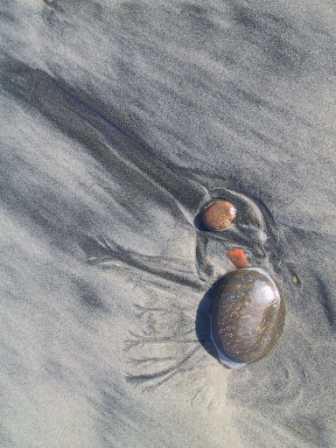 Figure 3: Beach 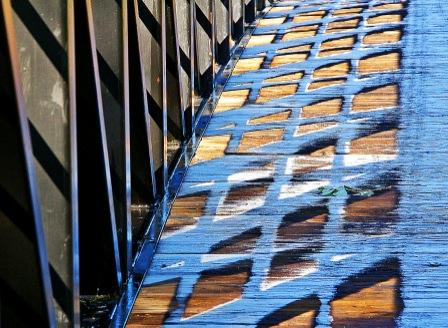 Figure 4: Frost 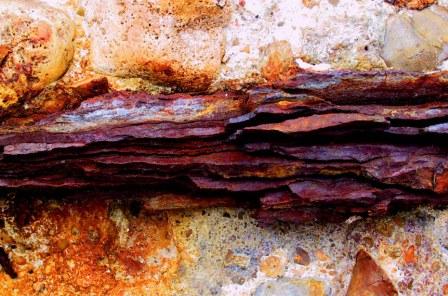 Figure 5: Rusty Rebar Found vs. posed Minor White (1957/1980) shifted from carefully planned photographs to photographing found objects, which he described as an object finding its own form or “photographs that found themselves” (p. 307). Many creative photographers elaborately pose or stage the subjects in their photographic art, and strive to eliminate any accidental images. I articulate this dimension as ‘found vs. posed,’ and I describe my work as based on ‘found’ objects or arrays. I rarely if ever pose the objects I photograph for my art, and only occasionally will remove a small distracting item. I appreciate seeing interesting naturally occurring images that I serendipitously find (or that find me). In this sense, to refer to the ‘take versus make’ dimension, I like to ‘take’ images as they naturally occur and then ‘make’ the image into something aesthetically appealing. Human artifacts vs. nature Nature provides intriguing images independent of human participation or involvement, and many accomplished photographers focus on images of nature. Human activity also generates a variety of fascinating images, leading me to distinguish a further construct dimension that I label ‘human artifact vs. nature’ among found objects. Of course, humans themselves could represent a third element, but I note that, although I enjoying taking pictures of people, my art photographs rarely include human forms, reflecting a purely personal emphasis. While each, and in combination, may yield interesting images, and I equally enjoy both types of images, we may note differing qualities in them. Siskind (1963/1980) observed that his pictures tended to include geometric and organic forms together, revealing duality and ambiguity. I label this subordinate dimension ‘straight & angular vs. organic & round.’ Images from nature (including the human form) include flowing, organic shapes (Figures 6 & 7), while those from manmade objects tend toward edges, angles, and geometric patterns (Figures 8 & 9). 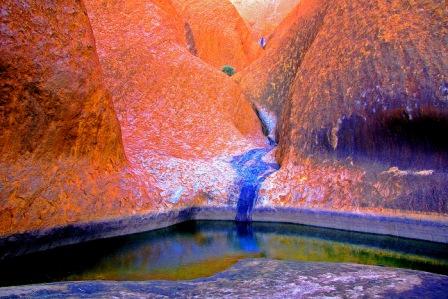 Figure 6: Uluru  Figure 7: Driftwood and Sand  Figure 8: Reaper Detail 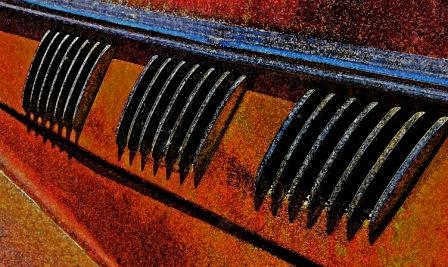 Figure 9: Antique Car Dilated vs. constricted Szarkowski (1966/1979) pointed out that a photograph’s edges demarcate a subject that extends beyond it in four directions, and he regards the choice of the edge of the picture as the central photographic act. Creative photographs may fall along a dimension reflecting the extent to which the image represents a smaller or larger portion of the available visual field from extreme close-up images of small objects to a wide-angle scenic array. We may understand this process in terms of Kelly’s (1955) construct of dilation vs. constriction. A photographer may choose to constrict the perceptual field to a more manageable array, reducing the perceptual boundaries in order to minimize incompatibilities within the construed image (Figures 10 & 11). I like to regard this approach in terms of William Blake’s “to see the world in a grain of sand,” creating an image of a well-elaborated ‘miniature world’ in an often overlooked object or array. Relative dilation may provide an opportunity for greater control of a wider field (Figures 12 & 13) but still may include eliminating aesthetically unappealing elements or those that could distract from the overall composition. 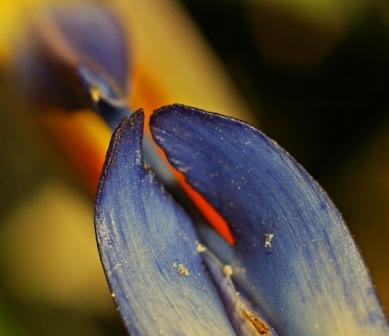 Figure 10: Flower Macro 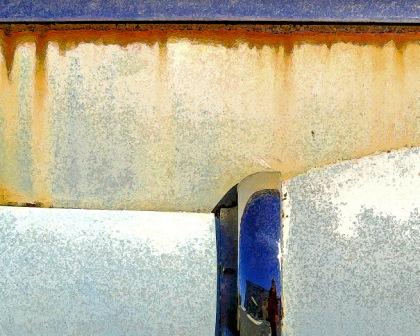 Figure 11: Caddy 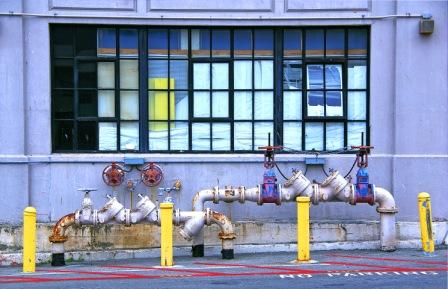 Figure 12: Wharf 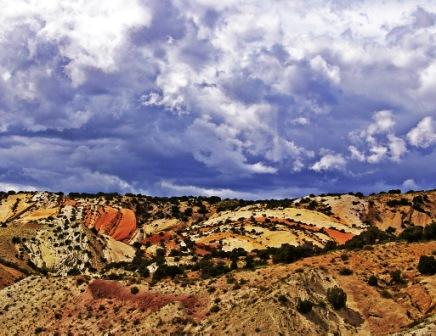 Figure 13: Utah Clouds As exposed vs. adjusted Exposing images on the camera typically provides Photoshop and similar computer programs provide opportunities to create a final image almost entirely on the computer, whether from a variety of originals or from significant modification of the original. In my modifications I prefer to leave the basic image as found but to adjust qualities (subordinate construct dimensions) such as sharpness, contrast, color saturation, and brightness, as well as cropping the image to yield the most satisfying composition. These adjustments may lead to a visual difference between the original ‘raw’ photograph (Figure 14) and the final image (Figure 15), but the satisfaction derives from using adjustments to create a manifestation of the image that I may have felt or intuitively ‘seen’ in my own experience when making the exposure, or to construct a particularly aesthetically interesting result. 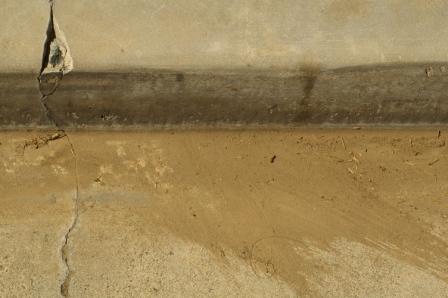 Figure 14: Curb As Found 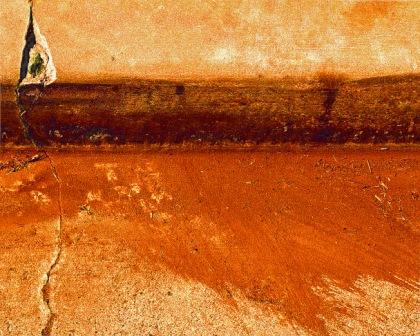 Figure 15: Curb Adjusted BRINGING CLOSURE To recapitulate, I view my approach to creative photography as a process involving appropriating or ‘taking’ existing elements to construct or ‘make’ an image that does not necessarily re-present an independently existing reality but may generate a response in a viewer, perhaps by an image of objects the viewer might not otherwise note. This process may begin with relatively unplanned spontaneous activity, generating exposures of impermanent objects or events that I ‘find’ or that ‘find me.’ These ‘findings’ may occur in nature, human artifacts, or both, and the scope of the exposure may range from a wide perceptual field or a tightly narrowed view. I may adjust various image characteristics in the exposed image to yield a satisfying and engaging final product. From the viewpoint of Kelly’s (1955) Creativity Cycle, we may see this process as a sequence of recurrent loosening and tightening, experimenting with images, adjustments, and compositions. The loosening phases generate various options, while the tightening cycle ideally leads to an image that both appeals to the photographic artist and, while imposing no inherent meaning of its own, generates a stimulating response in the viewer. 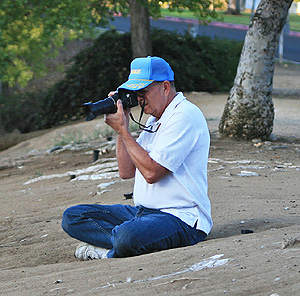 | |||||||||||||||||||||||||||||||||||||||||||||||||||||||||||||||||||||||||||||||||||||||||||||||
| |
|||||||||||||||||||||||||||||||||||||||||||||||||||||||||||||||||||||||||||||||||||||||||||||||
| REFERENCES | |||||||||||||||||||||||||||||||||||||||||||||||||||||||||||||||||||||||||||||||||||||||||||||||
| Adams, A. (1943/1980). A personal credo. In
B. Newhall (Ed.). Photography: Essays
& Images (pp. 255-261). New York: Museum of Modern Art.
Adams, A. (1959/1979). I am a photographer. In P. R. Petruck (Ed.). The camera viewed: Writings on twentieth-century photography, vol. 2 (pp. 25-39). New York: E. P. Dutton. Barthes, R. (1981). Camera lucida: Reflections on photography. New York: Farrar, Straus, & Giroux. Barthes, R. (1982). The photographic message. In S. Sontag (Ed.). A Barthes Reader (pp. 194-210. New York: Hill and Wang. Baudrillard, J. (1988). Simulacra and simulations. In M. Poster (Ed.). Jean Baudrillard: Selected writings (pp. 166-184). Stanford: Stanford University Press. Baudrillard, J. (2000). Photography, or the writing of light. Retrieved from www.ctheory.net/articles.aspx?id=126, August 4, 2008. Butt, T. (2005). Personal construct theory, phenomenology and pragmatism. History & Philosophy of Psychology, 7 (1), 23-35. Crimp, D. (1993). On the museum’s ruins. Cambridge, MA: MIT Press. Dewey, J. (1934). Art as experience. New York: Perigree. Eversole, T. (2005). Alfred Stieglitz’s Camera Work, and the Early Cultivation of American Modernism. Journal of American Studies of Turkey, 22, 5-18. Kelly, G. A. (1955). The psychology of personal constructs. New York: Norton. Kelly, G. A. (1964/1979). The language of hypothesis: Man’s psychological instrument. In B. Maher (Ed.). Clinical psychology and personality: The selected papers of George Kelly (pp. 147-162). Huntington, NY: Krieger Lyotard, J.-F. (1989). Beyond representation. In A. Benjamin (Ed.). The Lyotard reader (pp. 155-168). Cambridge, MA: Basil Blackwell. Lyotard, J.-F. (1993). Answering the question: What is postmodernism? In T. Doherty (Ed.). Postmodernism: A reader (pp. 38-46). New York: Columbia University Press. McCoy, M. (1977). A reconstruction of emotion. In D. Bannister (Ed.). New perspectives in personal construct theory (pp. 93-124). New York: Academic Press. McWilliams, S. A. (1993). Construct no idols. International journal of personal construct psychology, 6, 269-280. McWilliams, S. A. (2004). Belief, attachment, and awareness. In F. Fransella (Ed.). International handbook of personal construct psychology (pp. 75-82). McWilliams, S. A. (in press). Interdependence, essence, and conventional reality: Middle way Buddhist and constructivist perspectives. In L. M. Leitner & J. C. Thomas (Eds.). Personal constructivism: Theory and applications. New York: Pace University Press. Siskind, A. (1963/1980). 1943 and 1944: A great change took place. In B. Newhall (Ed.). Photography: Essays & Images (pp. 305-306). New York: Museum of Modern Art. Sontag, S. (1977/1979). Photography in search of itself. In P. R. Petruck (Ed.). Introduction to the photographer’s eye. The camera viewed: Writings on twentieth-century photography, vol. 2, (pp. 213-237). New York: E. P. Dutton. Szarkowski, J. (1966/1979). Introduction to the photographer’s eye. In P. R. Petruck (Ed.). Introduction to the photographer’s eye. The camera viewed: Writings on twentieth-century photography, vol. 2, (pp. 202-212). New York: E. P. Dutton. Vaihinger, H. (1924). The philosophy of “as if.” London: Routledge & Kegan Paul. Weston. E. (1942/1979). Photographic art, an excerpt. In P. R. Petruck (Ed.). Introduction to the photographer’s eye. The camera viewed: Writings on twentieth-century photography, vol. 1 (pp. 95-101). New York: E. P. Dutton. White, M. (1957/1980). Found photographs. In B. Newhall (Ed.). Photography: Essays & Images (pp. 307-309). New York: Museum of Modern Art. | |||||||||||||||||||||||||||||||||||||||||||||||||||||||||||||||||||||||||||||||||||||||||||||||
ABOUT THE
AUTHOR Spencer A. McWilliams, Ph.D. has held faculty and administrative appointments at six
American universities and colleges from 1971 to the present. He has sustained
an active interest and participation in PCP for more than thirty years. He
currently serves as Professor of Psychology at California State University San
Marcos, San Marcos, CA 92096, USA. Spencer A. McWilliams, Ph.D. has held faculty and administrative appointments at six
American universities and colleges from 1971 to the present. He has sustained
an active interest and participation in PCP for more than thirty years. He
currently serves as Professor of Psychology at California State University San
Marcos, San Marcos, CA 92096, USA. E-mail: smcwilli@csusm.edu. Home Page: http://www.csusm.edu/mcwilliams/ |
|||||||||||||||||||||||||||||||||||||||||||||||||||||||||||||||||||||||||||||||||||||||||||||||
| |
|||||||||||||||||||||||||||||||||||||||||||||||||||||||||||||||||||||||||||||||||||||||||||||||
| REFERENCE McWilliams, S. A. (2009). Taking pictures vs. making art: A personal construal of creative photography. Personal Construct Theory & Practice, 6, 21-34, 2009 (Retrieved from http://www.pcp-net.org/journal/pctp09/mcwilliams09.html) |
|||||||||||||||||||||||||||||||||||||||||||||||||||||||||||||||||||||||||||||||||||||||||||||||
| |
|||||||||||||||||||||||||||||||||||||||||||||||||||||||||||||||||||||||||||||||||||||||||||||||
| Received: |
|||||||||||||||||||||||||||||||||||||||||||||||||||||||||||||||||||||||||||||||||||||||||||||||
| |
|||||||||||||||||||||||||||||||||||||||||||||||||||||||||||||||||||||||||||||||||||||||||||||||
ISSN 1613-5091
| Last update: 20 March 2009 - | Photos: © Spencer McWiiliams - Portrait: Home Page |